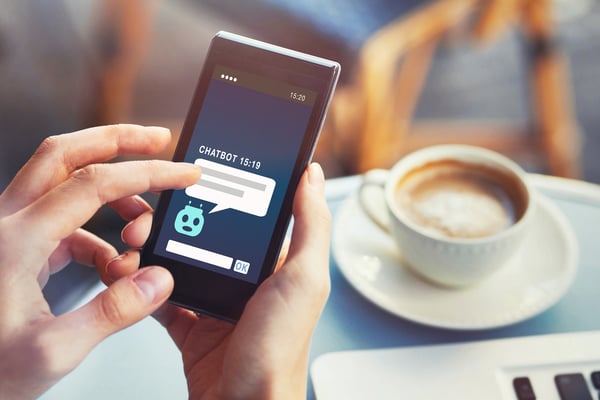
Chatbots are useful pieces of code that appear like an instant-messaging box at the bottom of a website page. When your potential lead comes across your page, they see a box pop up that asks a question, something like, "Do you have any questions?" or "Is there anything I can help you with?" These chatbots have programmed scripts that are cued by keywords, which allows them to answer a limited range of questions based on what the lead types into the box.

Chatbots have an "obtrusive" air: in many sites, they pop up as a "notification" or show some form of graphic in the corner of the screen. This is a welcome distraction when a lead has a question, such as on the pricing page or on an explanation of services, but is overkill when it appears on every single page. It's best to be quite selective about how you use your Chatbot while also paying attention to the analytics on your chatbot operator: if a chatbot is getting zero traffic on a particular page, remove it from there and put it onto another page where it can possibly have a better outcome.
The best place to start would probably be the page where your leads are seeing your pricing structure. They may want to know what all is included, or what a particular support or feature might entail. By starting with the pricing page, you are only using your chatbot on a particular kind of lead: this is a lead that isn't just accidentally on your page, but is instead quite interested in what you offer and thus quite qualified.
From there, expand your chatbot offerings based on the kinds of questions that are asked: if they consistently ask about system requirements or shipping policies, make sure you have a chatbot on the pages that outline those items, just in case they are not clear. What is even better about chatbots is that they allow you to incrementally revise your website through an implied usability test. Every time someone asks a question to the chatbot, it gives you information about what might make it even better in the future.
You can determine the kinds of things that your chatbot offers to help with. For instance, you can have the chatbot offer three options for what it can help with, and as you develop a broader tree of chat flows, you can add options. Don't have your chatbot promise the moon and then fail to deliver anything.
Whenever it is natural, find a way to use the chatbot to redirect to the sales team so that they can do their work with this interested lead. You don't have to make the chatbot go for the "hard sell" every time; sometimes, it just makes sense for the chatbot to redirect to a human being to give a more complete answer.
Speaking of human beings, make sure your leads can tell whether they are talking to a chatbot or a human. By having a small, friendly robot icon, you are less likely to make leads feel frustrated when they realize that a computer is chatting with them. If you give your chatbot a human name and a little photograph of a real person, prepare for customers to feel angry when they keep getting messages that make it clear that they are speaking with a computer.

Make it easy to interface between your chatbot and the calendar of an actual salesperson so that the chat interaction ends with a scheduling moment for a sales call.
When your chatbot has this functionality, your chatbot will be able to "connect" to whoever is manning the instant message system at the time and get real-time answers for interested leads.
If people have trouble navigating a large or complex site, code a chat flow that offers a link to the page the lead is trying to find. Keywords can really help them find these pages, and they feel "helped" in a way that a search bar does not accomplish.
No matter how scary feedback may be, it's so much better to get it through a chatbot than through a public review website. Accept critique warmly in this chat flow and make offers to connect them with a representative who can hear them out and work to right any wrongs.
Why not create a flow for each of your latest marketing campaigns, product launches, or other company-related news? These can be useful for people who are casually interacting with the chatbot; giving it "something to share" can make the conversation more natural and positive.
Offer at natural points in the "conversation" to add the lead to an e-newsletter or give them a free lead magnet. This doesn't have to be the first step of the conversation; it can be a few interactions into the conversation, when they've already made some connections.
Eniture Technology specializes in helping e-Commerce merchants grow by providing useful information, digital marketing services, off-the-shelf apps that solve common problems, and custom programming services. Please contact us if you need help growing your online business or implementing the concepts presented in this blog post.
Interested in learning more? Start with our free guide on how to increase online sales, and subscribe to our blog!
GET IN TOUCH
Phone: 404.369.0680
info@eniture.com
320 W. Lanier Avenue
Suite 200
Fayetteville, GA 30214
© 2015 Eniture LLC. All rights reserved.